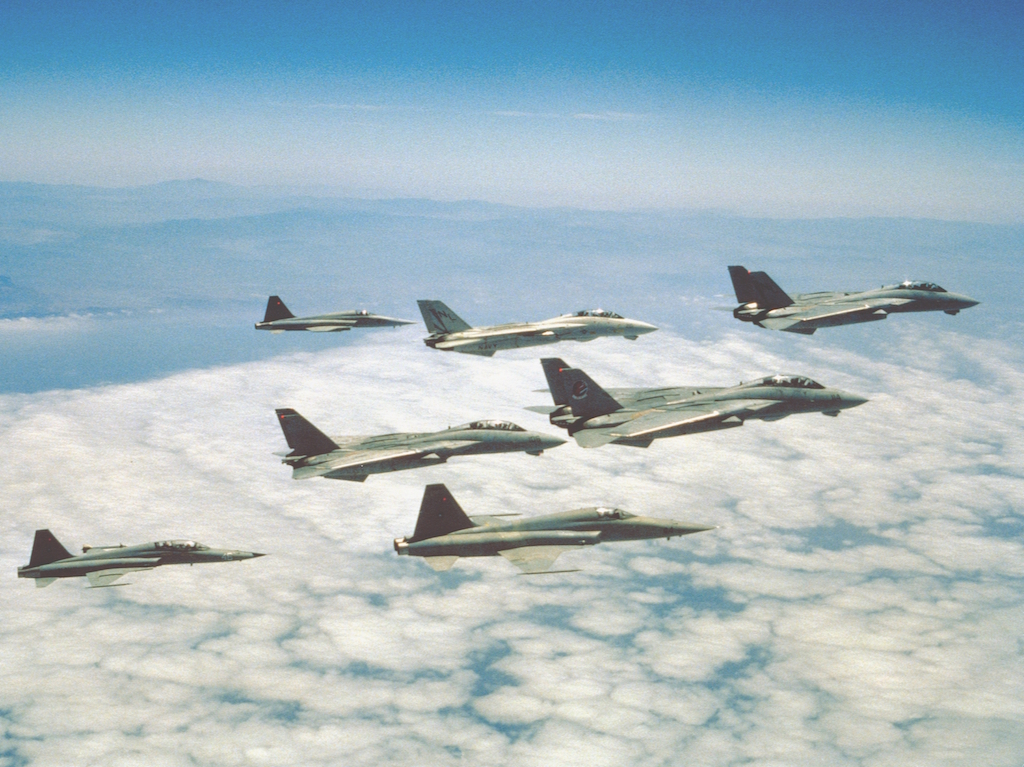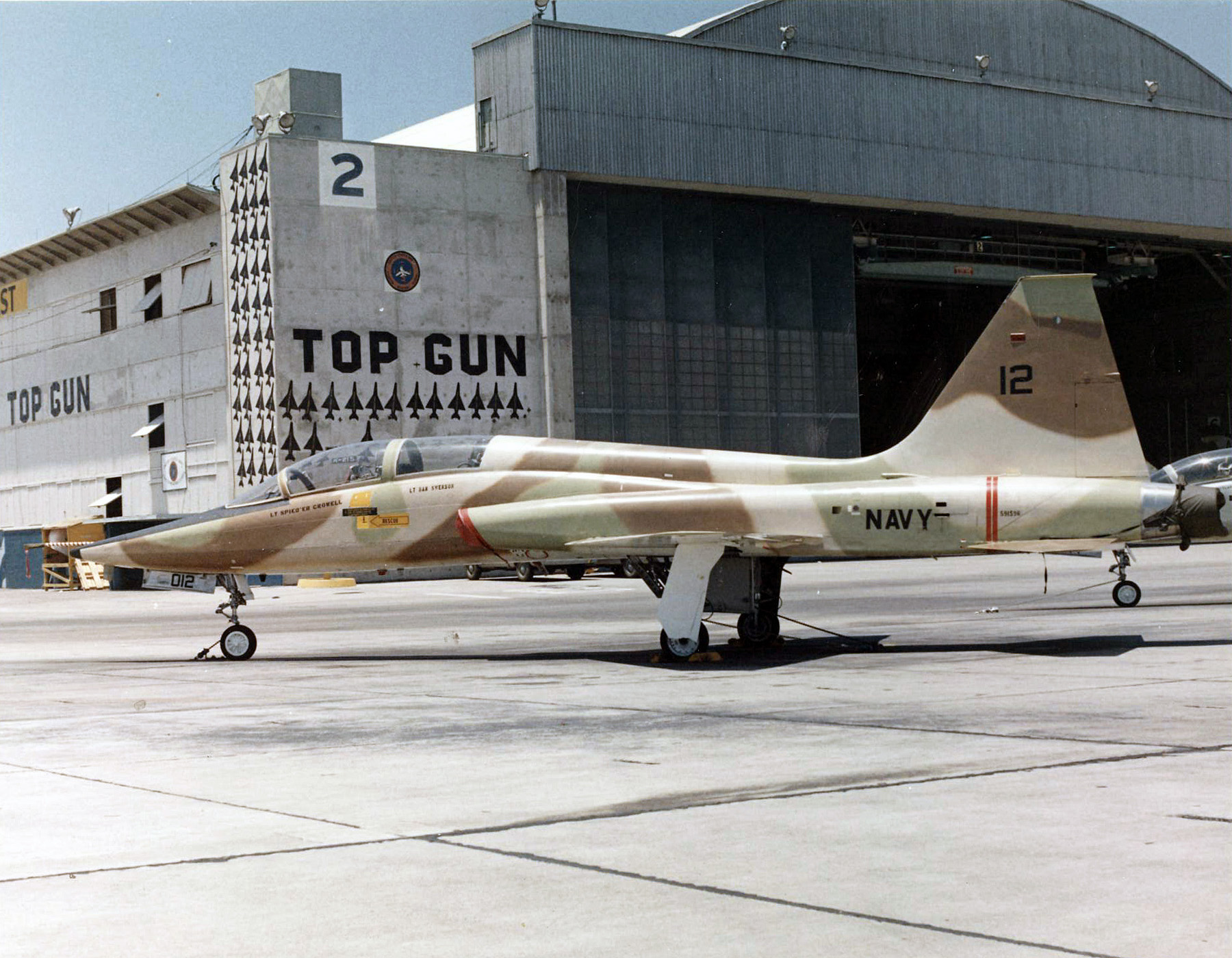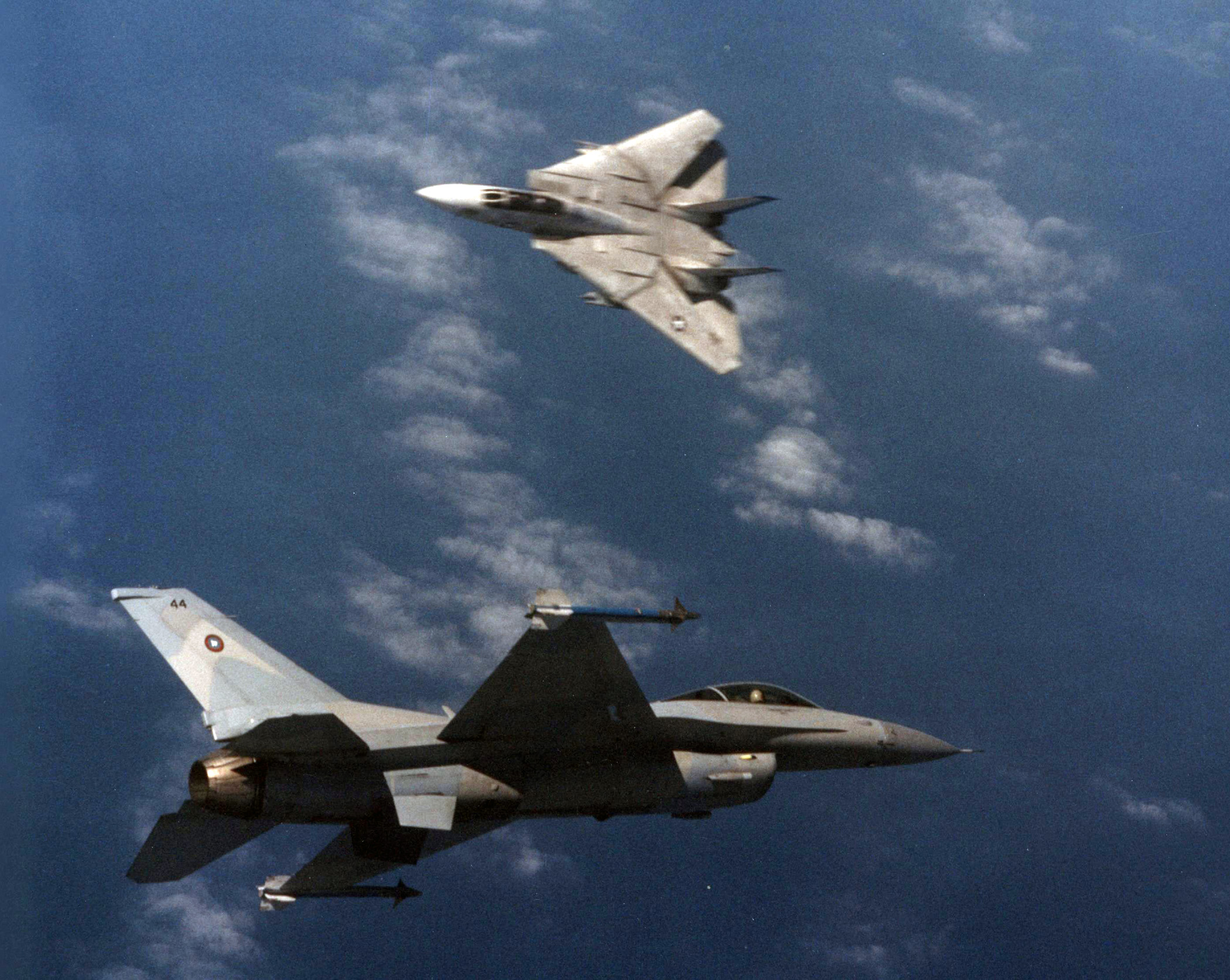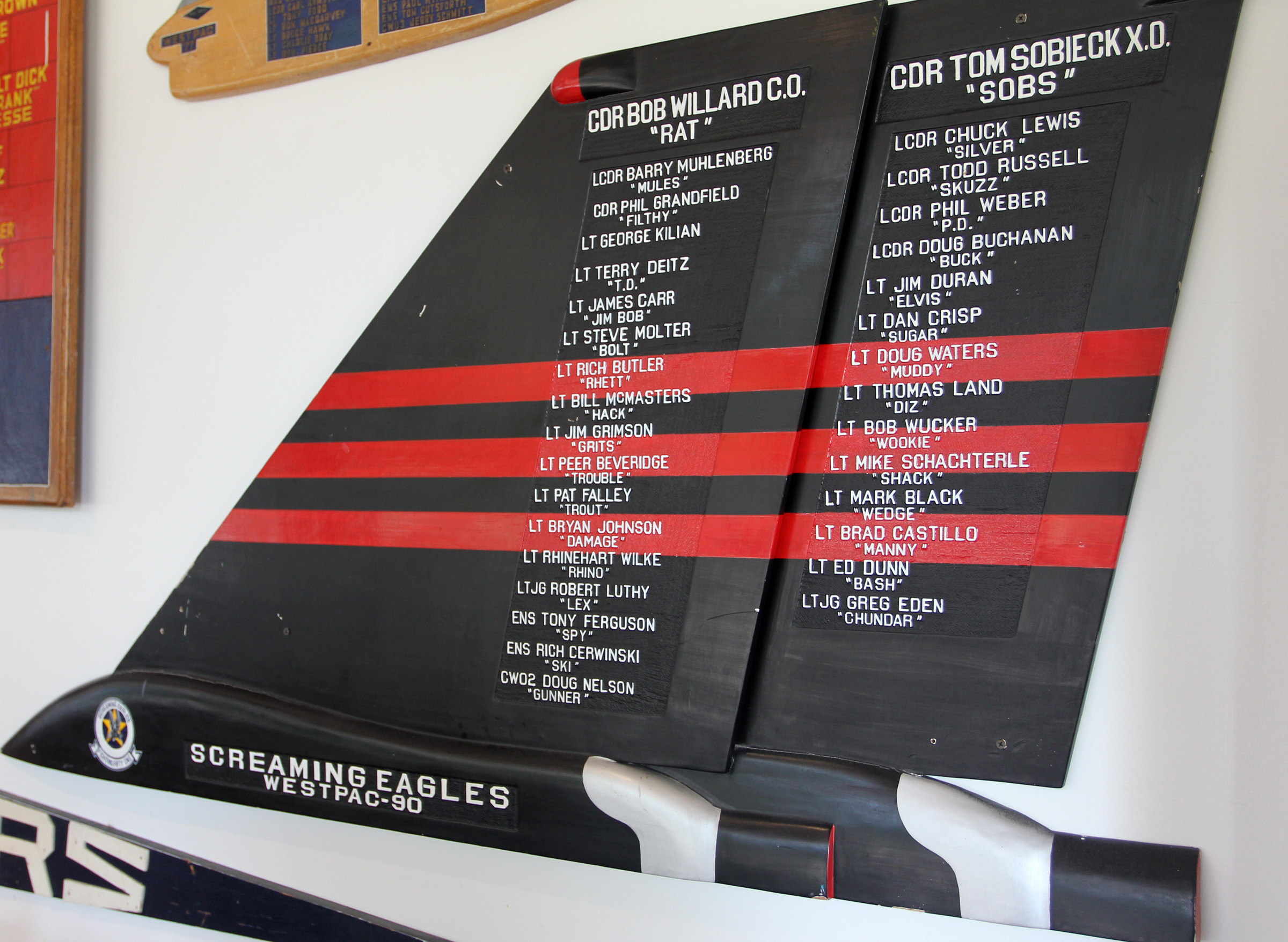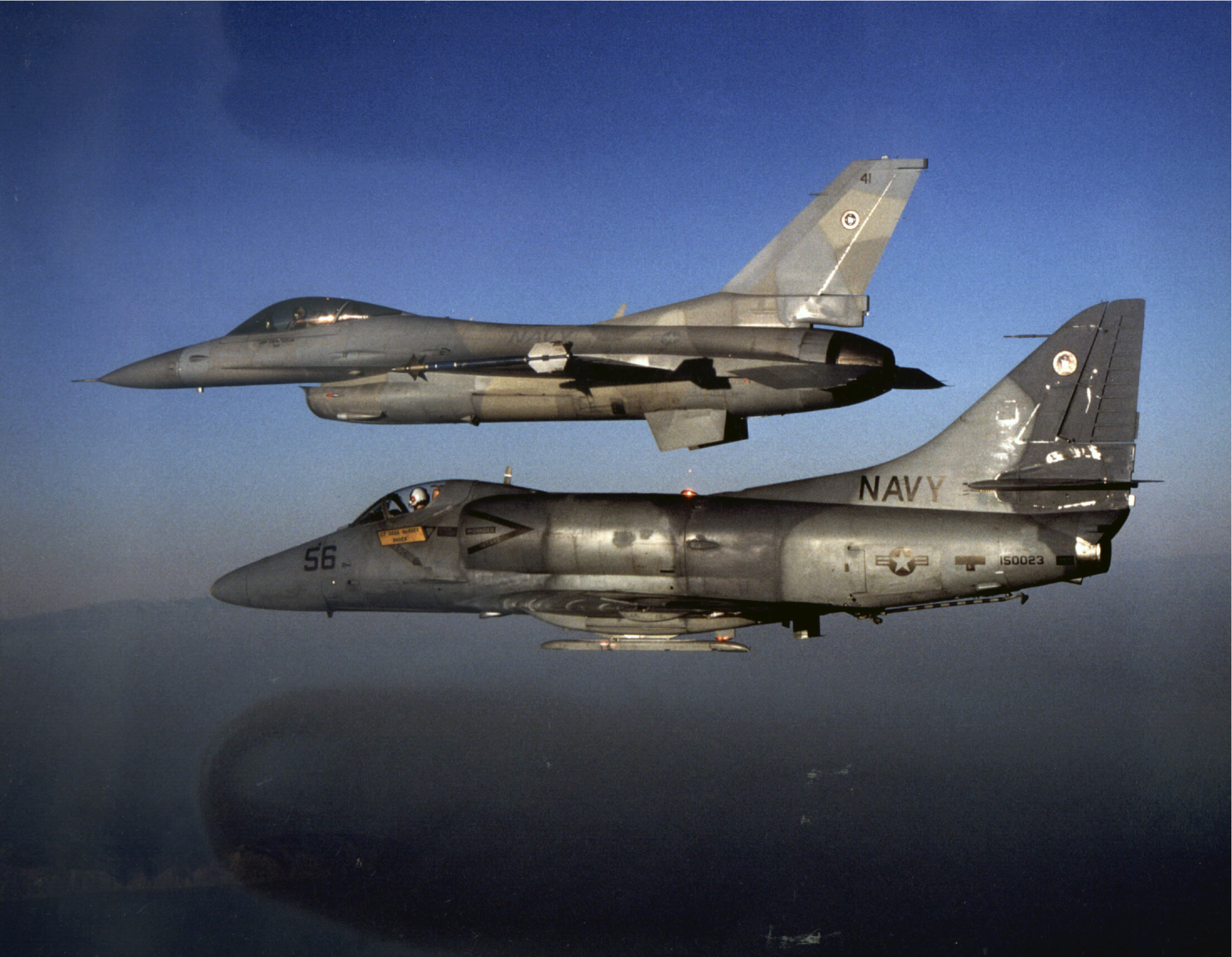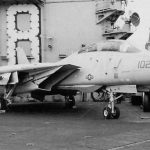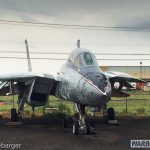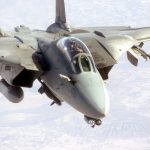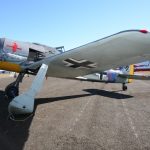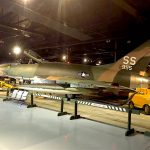By Hill Goodspeed Historian
Historian, National Naval Aviation Museum
Article originally written for the Sextant
More than thirty years ago, stunning footage of F-14 Tomcats flashed across the silver screen and moviegoers were introduced to the high-speed operations and culture of naval aviation through the characters “Maverick,” “Goose,” “Iceman,” and “Charlie.” The release of the movie Top Gun on May 16, 1986, came at a time when naval aviation was very much in the public’s consciousness, with carrier aircraft having participated in strikes against Libya the previous month as part of Operation El Dorado Canyon. The combination was a boost to recruiting at the time and the film’s memorable soundtrack, scenes, and lines—“I feel the need, the need for speed”—have endured, even though the F-14 Tomcat has gone from frontline fighter to museum piece and the Navy Fighter Weapons School (TOP GUN) has moved from near San Diego to the desert around Naval Air Station Fallon, Nevada.
The Creation of Top Gun, Actual
The personalities of the fictional characters aside, the premise of the film rings true, a school of aerial combat born during the Vietnam War. In 1968, the Chief of Naval Operations initiated a study of the procurement and employment of missile systems. The impetus was the results of air-to-air combat over Vietnam since 1965, during which time American fighter aircraft had launched nearly 600 missiles in 360 engagements with enemy aircraft, achieving one kill for every ten missiles fired. Heading up the team of investigators was Captain Frank W. Ault, a veteran naval aviator with recent tours as a carrier skipper and carrier division chief of staff with Task Force 77 off Vietnam.
The resulting report, officially known as the Report of the Air-to-Air Missile System Capability Review and commonly referred to as the “Ault Report,” devoted page after page to technical evaluations of missile designs and performance, but one small paragraph would have a lasting impact. Up until 1960, the Navy had operated the Fleet Air Gunnery Unit and the report concluded that its disestablishment had created “a gradual loss of expertise and continuity in the field of fighter weaponry. This trend,” it was determined, “must be reversed by providing a means of consolidating, coordinating and promulgating the doctrine, lore, tactics, and procedures for fighter employment.” The result was the Navy Fighter Weapons School. Established on March 3, 1969, it initially was attached to Fighter Squadron (VF) 121 and operated out of a trailer, the initial cadre of personnel assigned to the school building the syllabus for what evolved into the premier training program for aerial combat.
The Creation of Top Gun, The Movie
A profile of the school that appeared in an issue of California magazine inspired production of the motion pictured about the Navy’s elite fighter pilots. The movie also received support from the sea service, with a number of naval aviators and naval flight officers assigned to fly the aerial sequences and serve as technical consultants. The Sailors that helped included future Vice Chairman of the Joint Chiefs of Staff Admiral James “Jaws” Winnefeld, Jr. and future Commander, U.S. Pacific Command Admiral Robert “Rat” Willard.
Captain Lloyd “Bozo” Abel, USN (Ret.), then a lieutenant commander, made numerous flights for the movie, including taking up the film’s young star, Tom Cruise. Abel told a reporter in a 1986 interview that he actually had to rent a video tape of the movie Risky Business so that he would recognize the actor. Abel related that the dogfighting scenes were flown with the airplanes closer than normal so that they could be captured in one frame and revealed that the most difficult maneuver for him was the roll he performed after launching from the carrier for the scene in which “Maverick” heads toward the engagement with enemy “MiGs” in the movie’s final scenes. The challenge was not in executing the roll, but doing it in a way that kept the rear-facing camera attached to the airplane pointed at the carrier. Fro Abel, there was one moment above all others that was for him the highlight of the filming. He was given the opportunity to play “Maverick” when the Cruise’s character violates regulations and makes a low pass by the control tower at NAS Miramar. “It’s not too many times they say ‘Hey, Bozo, how’d you like to buzz the tower a couple of times,’” he recalled in 1986.
Fact from Fiction
Being a product of screenwriters, the movie Top Gun takes its share of Hollywood license. For instance, a crisis situation halfway around the world would not require the quick dispatch of recent Top Gun graduates to a carrier at sea. Aviators sitting at desks more suited for an elementary school for a briefing on the flight line was not indicative of the professional instruction at the Navy Fighter Weapons School. Yet, in the bravado and competitive spirit of fighter pilots and the thrilling aerial dance of air-to-air combat, the movie struck a chord with the public that endures to this day. Oh, and yes, the mission of the school is still to, “Train the way you fight; fight the way you train.”
Hill Goodspeed is a native of Pensacola, Florida, and comes from a naval family. His grandfather trained at NAS Pensacola as a naval aviator during World War II, his father was a Vietnam War-era Marine officer, and a great uncle served as a PT-Boat skipper in the South Pacific during World War II. Article originally written for the Sextant







